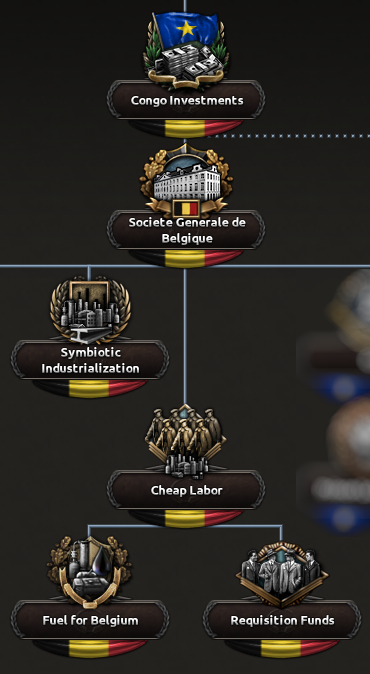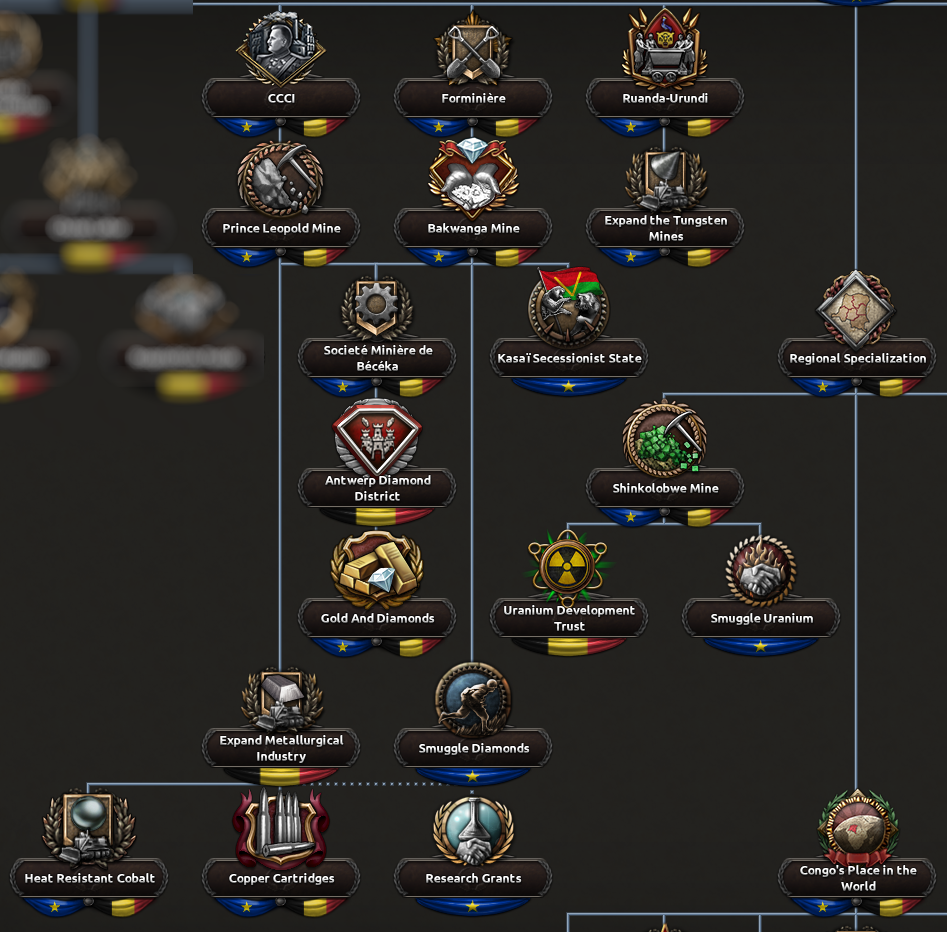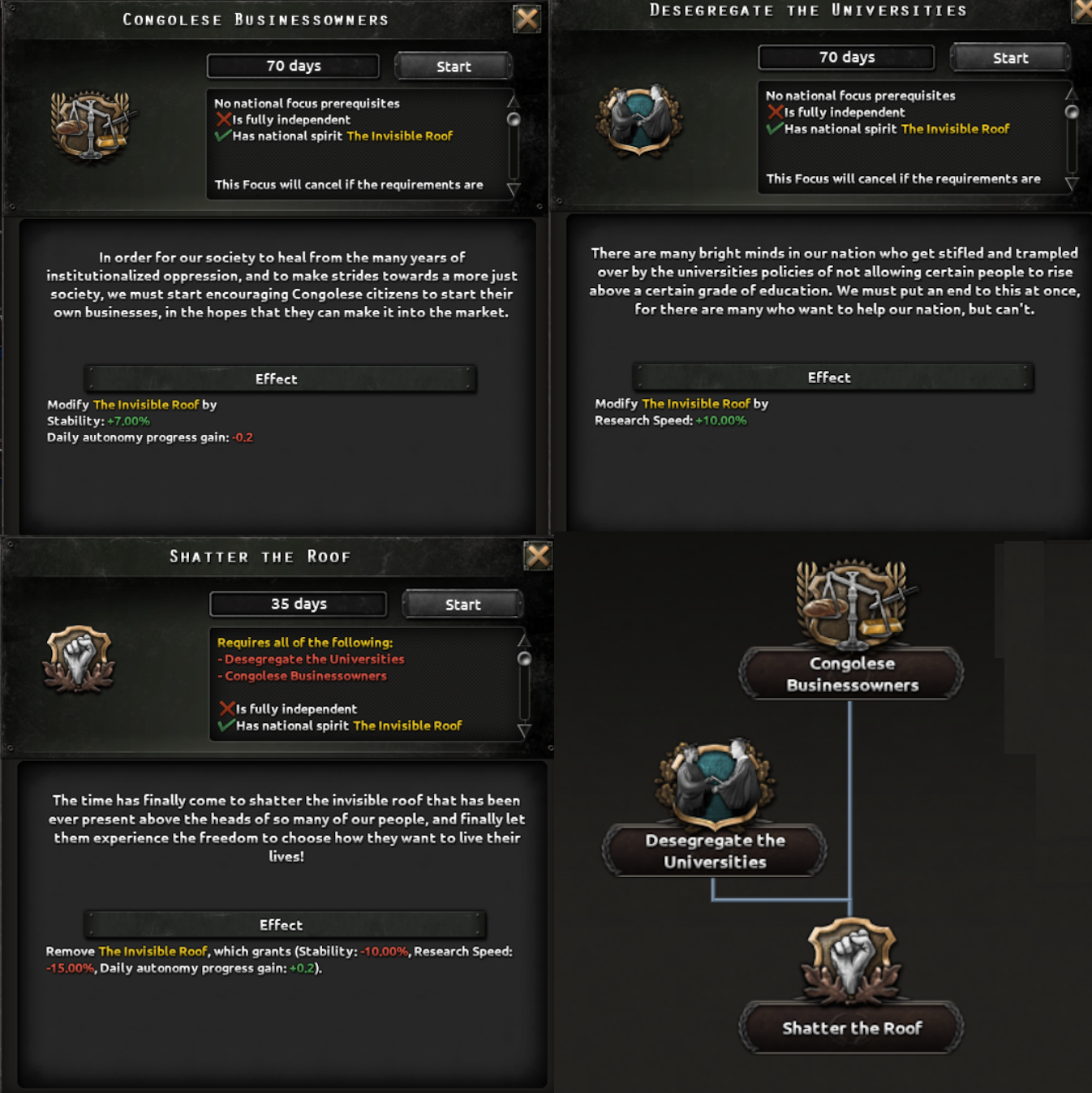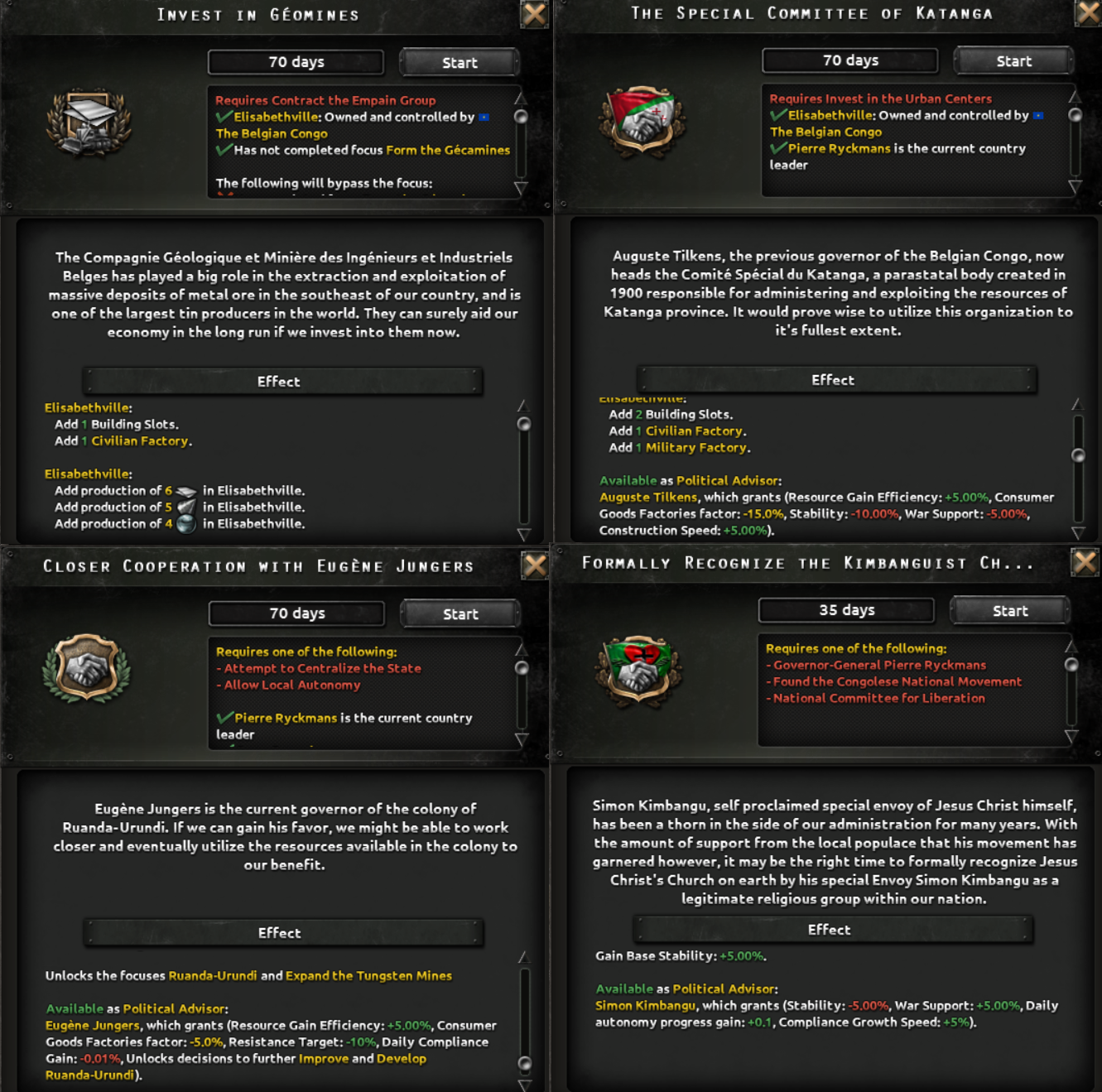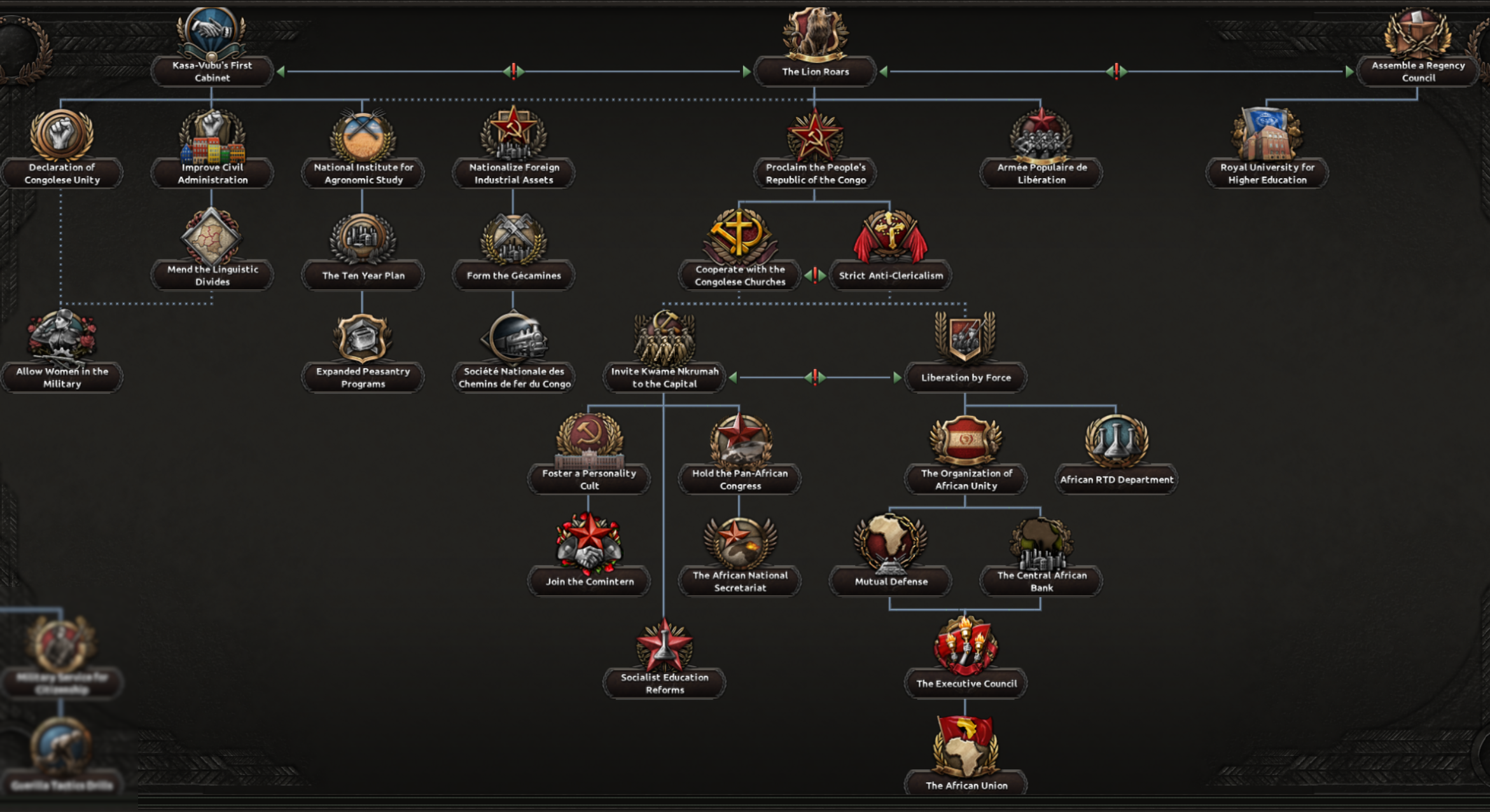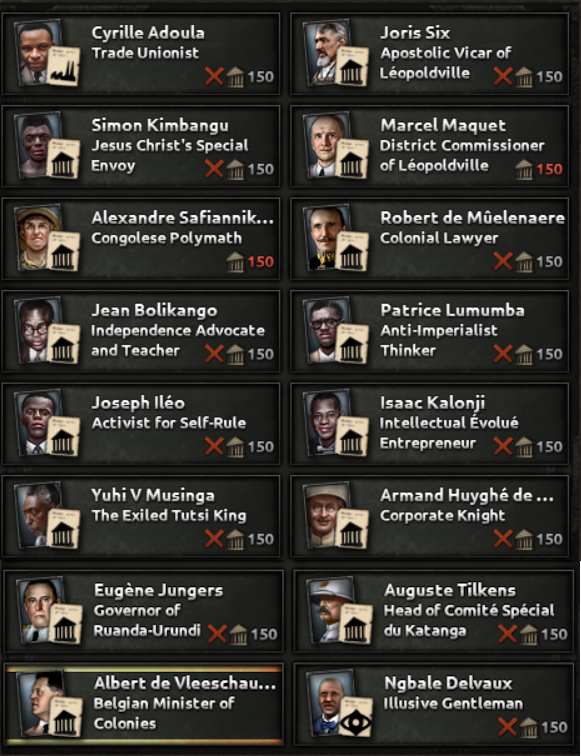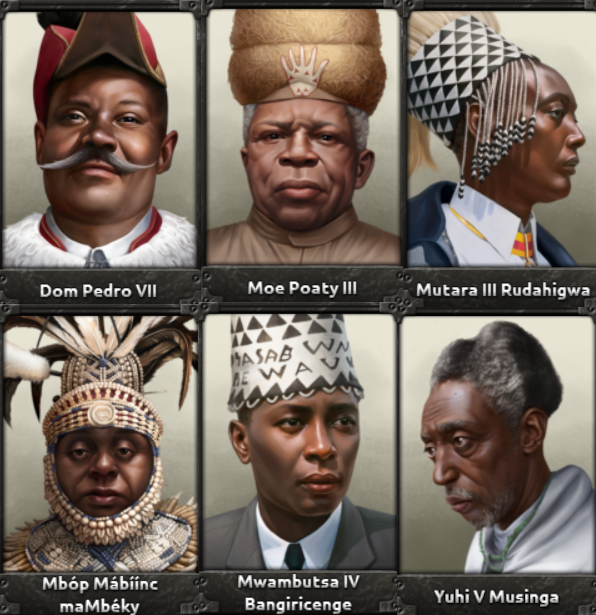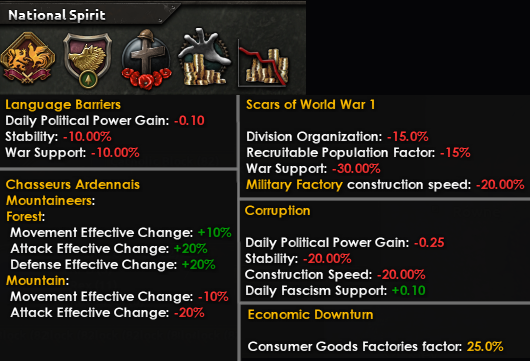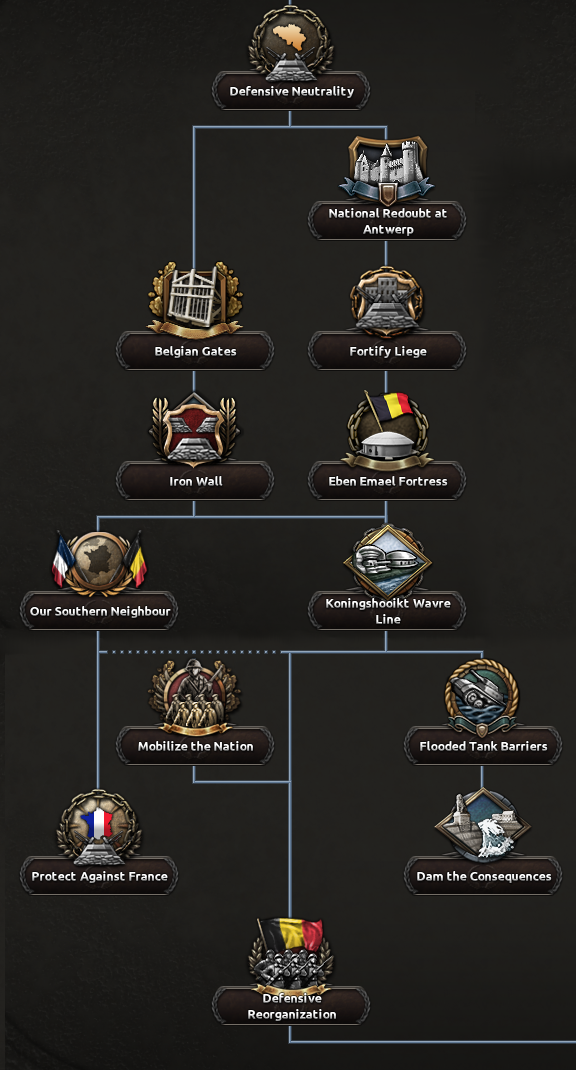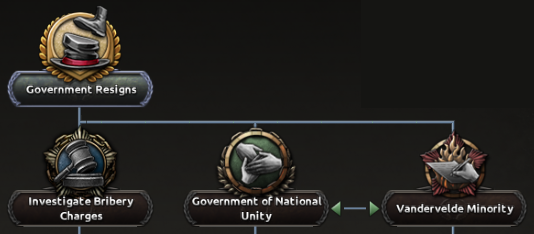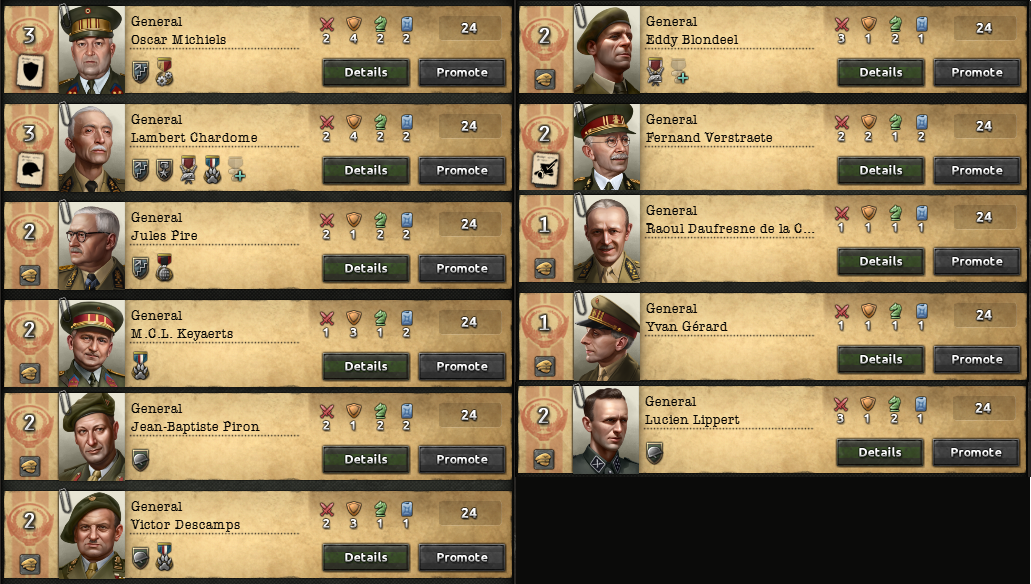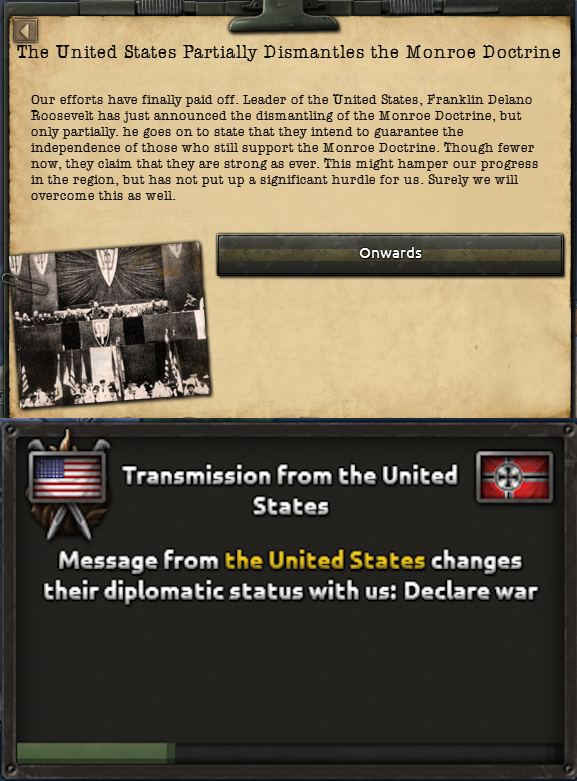
Nov 13, 2024
Hearts of Iron IV - PDX Chakerathe
Greetings all,
With a mere one day to go before the launch of Götterdämmmerung, it is tradition that we leave you with the change log to pore over. The usual disclaimer applies; this list should be comprehensive but omissions may have occurred. Any items we add retroactively will be placed in a separate spoiler underneath the main list.
##################################
# Expansion
##################################
- Added new German ahistorical focus tree paths
- Added full Austrian focus tree
- Added full Belgian focus tree
- Added full Congo focus tree
- Added new Hungarian focus tree
- Added over 180 new 3D models, including cool experimental equipment, unit models, cool experimental equipment and landmarks.
- Added 11 new music tracks
- Added 28 new Special Projects
- Added Air, Paratrooper Raids, and targeted missile raids
- Added VO for Austria and Belgium
- Added Helicopter Brigade
- Added Helicopter Logistics
- Added Helicopter Medevac
- Added Armoured Maintenance Company
- Added Armoured Engineer Company
- Added Assault Engineer Company
- Added Super-Heavy Artillery Companies
- Added Land Cruiser Support Company
- Added Super-Heavy railway gun
##################################
# Feature
##################################
- Research Tab was enriched with Scientists, Experimental Facilities and Special Projects.
- Added 15 new Special Projects
- Added 2 Special Projects to the No Step Back expansion
- Added new historical German focus tree paths
"- Reworked Land and Coastal Forts - their maximum buildable level is now capped by the province terrain type. Those caps can be increased primarily by researching new Fortification Technologies "
- Added numerous new technologies associated with or unlocked by Special Projects
- Added a variety of horse colours for cavalry units
- Added focus shortcut system showcased in the German national focus tree
- added raids system for launching nuclear bombs
##################################
# Balance
##################################
"- Rebalanced Norwegian advisor traits
- Added Rolf Jørgen Fuglesang, Eivind Blehr, Eivind Heiberg, Christopher Hornsrud and Kirsten Hansteen as new advisors for Norway."
- Updated a few Czechoslovak focuses to be a bit better or faster. Also added more flavour to many of the names of the Czechoslovak focuses.
- A few faction-joining focuses in the Spanish and Portuguese trees have now been made into 35 days focuses.
- Updated the French focus and national spirit "Fortification Focus" to additionally grant +1 max level for land and coastal forts.
- Updated the Czech "Fortification Studies" and "Sudetenland Fortifications" focuses to grant additional max fort levels, to accommodate for the new fort system.
- The Turkish AI shouldn't start WW3 with historical focuses on
"- Fixed an issue with the French decisions to reorganize the various Air Force MIOs so that they no longer get the same name duplicated. Also rebalanced the decisions to be more worth taking.
- Added the Société Française Radio-Électrique asa new electronics concern for France.
- The French focuses “Latin Entente” and “Towards a New Europe” now don’t only change the country leader, but also change the name of the leading political party to match the leader you gain.
- The French Focus “Bring Home Quebec” now also gives claims on all Quebec cores.
- Fixed an issue where the French focus “Grow the Empire” didn’t account for the new Congolese states added in BBA.
- The French focuses “Reach Out To Spain” and “Invite Portugal” have been made into 35 day focuses.
- The French focus “The Natural Borders of France” now also gives claims on the target states.
- The French focuses “Celebrate the Commune” and “Legal Equality” have been made into 35 day focuses.
- The French National Spirit “Agricultural Collectivization” now additionally grants -10% consumer goods factories factor.
- The French focus “Proclaim the Third Empire” now creates a faction called “The Continental System”, that is renamed to Confédération du Rhin when taking the focus “Disunite Germany”.
- The French national spirit “Le Déluge” now additionally grants 10% war support.
- The French focus “Utilize the Leagues” now grants an additional 75 political power and -3% stability.
- Adjusted a few consumer goods factories values in the Soviet industrial Branch that still held values and tooltips from before the factories to factories factor change.
"
- The British focus "Home Defense" now unlocks a decision category that can use to aid in the defense of the British Isles.
- The American focuses "Tank Destroyer Doctrine" and "Main Battle Tanks" are now 35 day focuses.
- Croatia is now more likely to be created when yugoslavia ends up at war with germany
- South Africa now has access to a few of the British MIOs, and the focus "South African Railways" now can unlock the basic train tech for free, as well as adds 15 British trains to the stockpile.
- Added a new focus for the United Kingdom with La Resistance to expand the MI6, and gain an intel agency, operative slot and some other intel bonuses.
- Updated the Polish air-focuses to work better with the BBA techs. Also made the focuses "Expand Air Bases" into a 35 day focus.
- Added the ability for Ethiopia to prospect for a small amount of extra resources within it's core territory.
- The Estonian focus "Join the Axis" now takes 35 days instead of 70.
- Italy can now gain an Air Facility north of Rome in the focus "Città dell'Aria".
- The Soviet focuses "Modernize Aircraft Facilities" and "Soviet Atomic Bomb Project" can now give them a facility of the corresponding type.
- Sonar Modules Submarine Detection increased from 6/10 to 8/12
- Depth Charges Modules Anti-Submarine Attack Values increased from 8/12/16/20 to 8/13/17/22
- Submarine Torpedo Modules Attack Values reduced from 14/18/22/28 to 13/17/20/25
- Submarine Engine Modules Visibility Reductions changed from 0%/-5%/-10%/-15% to 0%/0%/-5%/-10%
- Some Chilean democratic focuses are no longer blocked from each other. Some effects in the branch have been adjusted to accommodate for this.
- Players can now reject handing pre-planned expansion states over to Bulgaria.
- Cavalry now gets +5% Breakthrough in Infantry Offensive Doctrine (Grand Battleplan Infilitration Path) and Cavalry Recon bonus from Infiltration Assault (Grand Battleplan Infilitration Path) now also extends to mounted infantry
-Prioritize Naval Aircraft Construction Decision for Japan now provides -10% cost reduction to Carrier Naval Bombers and Carrier Air Support, to reduce their double-dipping effect from -40% to -30%
-Admiral Trait Concealment Expert Visibility Reduction was reduced from -20% to -15%
-Giving Refuge to Italian and German Scientists now also provides +2% Special Project Research Speed
- Fuel Silos cost is now cheaper based on the amount of already existing Fuel Silo in the state.
##################################
# Gameplay
##################################
- Added names for Polish Cavalry Brigade Commanders
- Added the Czechoslovak State Railways as a new industrial concern (railway company) for Czechoslovakia.
"- Added admiral roles to Dimitrios Oikonomou and Epameinondas Kavvadias
- Added Stylianos Gonatas as a military high command and general for the Greek republicans
- The Greek industrial focus Fiscal Responsibility now hires Emmanouil Tsouderos for free if possible
- The targeting for construction in the Greek focus Making Use of our Islands has been switched from owned to controlled states, and can also target Cyprus if they are a puppet of Greece. It can also integrate Cyprus if that is the case.
- The MIOs gained from the Greek focuses Rapprochement with the Italians and Appeal to the Soviet Union now gain 2 sizes immediately
- The Hellenic Air Force Academy national spirit now grants an additional 5% air exp gain factor
- The Greek focus A Legacy of War also grants 3% organization
- The Greek focus The Backbone of the Army now grants half a percent of recruitable population, from the previous a fifth of a percent
- Added a new focus to the Greek industrial branch to utilize the Macedonian Farmlands in order to gain supply bonuses and a tiny reduction to consumer goods factor
- Many Greek focuses regarding switching ideologies, factions or wars, are no longer available to them if they are a subject of another nation
- Added a new focus to the Greek monarchist branch, allowing for the Reorganization of the Royal Guard, leading to some manpower and two free divisions
- Modified the event The Monarchists in Greece Request our aid so that the British are much more likely to say yes and send equipment
- Added a new focus in the Greek monarchist branch allowing for the further utilization of British capital, allowing for more infrastructure and building slots in Greece
"
- Added the Antillean Confederation as a new formable for nations in the Caribbean. Also fixed an issue where Belize couldn't access the decision to Form Central America.
- Added New South Wales Railway Company as an industrial concern for Australia.
- Added New Zealand Railways as an industrial concern for New Zealand.
- Various old focuses connected to the Soviet Union, Finland, Sweden and Portugal now grant dams as buildings that give states additional positive state modifiers.
- Added Fanny Schoonheyt as a General for the communist Netherlands.
- The French advisor Charles Maurras can now also be unlocked by the focus "Orleanist Restoration".
- Added Vasily Flug and Boris Shtefion of the Russian Protection Corps as characters that can become available through various means for Germany, Yugoslavia and the Soviet Union.
- Added a focus for Fascist/Tsarist Russia to gain a wargoal to reclaim Uryankhay Krai. Also changed the focus "Vengeance for the Yoke" to a 35 day focus.
- Tsarist/Fascist Russia can now release nations after taking the focus "Reconvene the Zemsky Sobor".
- Updated and improved the Post-Yalta events between Poland and the Soviet Union.
- Added a focus for the United Kingdom to expand Vickers Experimental Facilities in Foxwarren.
- The British national spirits "Wartime Industry" and "Prepare for the Inevitable" can combine, thus enabling less clutter in the UKs country screen.
- Luxembourg now starts with ARBED as an available Industrial Concern.
- Ethiopian High Command Feodor Konovalov can now join the Russian White Forces when the Second Russian Civil War starts.
- Added a crossing in the Philippines between Mindanao and Sulu.
- The British AI will now protect their main island better
- Mutapa can now be formed when a subject of another nation, and has seen its borders expanded slightly.
- Added Georges Valois as an advisor for France.
- If the conditions are right, Georgia may find an unexpected visitor on their doorsteps.
- Added Marcel Déat as an advisor for France.
-Degaussing Effects are now standardized. For MTG players, Degaussing Technology now gives +10% Submarine Detection to the Destroyers and Cruisers - and the unique spirits that awarded them are no longer granted. For non-MTG players those national spirits still provide the effect for those select countries
- Added new unit categories in order to clean up some of the less 'readable' technologies and doctrines (Hello, Mobile Infantry!).
- Cavalry now benefits from Anti-Tank Weapon Technology with the same ratio as Support Weapons. (2/5 - so +10% Hard Attack and +40% Piercing)
- Supremacy of the Battlefleet Japanese National Focus now awards a National Spirit granting +10% Capital Ship Armor and +100% Super Heavy Battleship Special Project Completion Speed
- Area defense orders now start with no pre-selected parameters, reducing overall interaction required in most circumstances
##################################
# UI
##################################
- Fix of bug where factory conversion button had no glow when selected. From now all building construction buttons will glow at once only if player not uses all of the available factories.
- Country-specific train icons are now shown properly in the production menu
##################################
# AI
##################################
- Fascist countries now also respect negative declare_war AI strategy values
- implemented a new system for AI political-power spending
- Invasion importance score is affected by 'invade' strategy, and tweaks to the US Operation Torch strategies
##################################
# Modding
##################################
- Fix trigger all_enemy_country trigger to evaluate all countries and not just any
- Added variable divisional_commander_xp to set divisional officer experience on unit creation
- Allow using MIO category equipment group as equipment bonus type
- Add state_resources_<resource>_factor state modifier
- Add a equipment_production_min_factories_archetype AI strategy which only affects equipment of a specific archetype
- Fixed bugs and revamped how the AI designs division templates. Removed a bunch of properties from division templates that either didn't make sense or were simply not useful.
- AI division templates now get their AI role assigned on creation based on their target template, rather than being dynamically matched to a role based on match_to_count.
- Add MIN_SHIPS_FOR_HIGHER_SHIP_RATIO_PENALTY define which can be used to make penalties from having a higher ship ratio not apply to small fleets
- Added support for specifying division name list for AI templates
- Implement a trigger parameter to get all the states in a given continent
- A new trigger for naval invasion: has_naval_invasion_against_state
- Implemented a console command to show/hide all hidden techs
- Implement a new console command sp_prototype_reward
- Add AI strategy force_concentration_target_weight to affect which targets are being used by AI Force Concentration
- Add AI strategy force_concentration_factor to control to what extent the AI uses AI Force Concentration
- Add force_concentration_front_factor AI strategy
- Added support for disabling grow animations on buildings
##################################
# Graphics
##################################
- 3D buildings on map will now have fire/smoke pillars if they are damaged enough
- 3D cities on map will now have fire/smoke pillars if corresponding civilian structures are damaged enough
- Fixed DX11 trying to switch modes when Alt+Enter is pressed
- Selecting display monitor now works in DX11
- Selecting display monitor now works in both windowed and borderless mode
- It is now possible to override display settings from command line
- Free France flag should now use the proper historical blue/red hues rather than the post 1976 ones
- Updated the Czechoslovak focuses to improve the variation and spread of their focus icons.
##################################
# Bugfix
##################################
- Fixed a rare CTD for ai garrison order
- Now correctly display battalion modifiers when the factor is additive
- Spirits are now shown in the Modify Officer Corps alert
- Checkboxes in the strategic air view details graph and the fuel stockpile graph are now clickable
- Fixed an issue where previously-capitulated Lithuania would be released controlling Wilno state due to the Molotov-Ribbentrop Pact.
- No longer possible to justify war goal on impassable states
- Fixed an issue where the incorrect modifiers were applied to the Crusade Against Democracy ideas, leading to the effect not applying correctly.
- Fixed an issue where the the democratic party of Norway wasn't Høyre after taking the focus to get their leader as the new country leader.
- Fixed a bug that caused incorrect unit distribution when frontline is split
- Fixed an oversight where a few Turkish admirals were using the army versions of the traits "Career Officer" and "Media Personality".
- No longer possible to delete division templates used by divisions escaping into exile (which could cause crashes)
- Fixed broken texts in French news event for Claiming the French Throne.
- The Mexican decision Support the Spanish Right now also works with Non-Aligned Francoist Spain.
- Replaced Terrain Penalty Reduction modifier which was not working in National Spirits by the modifier Terrain Traits XP Gain.
- Fix the bug with the UI where daily power is clamped to 0 despite it being negative
- Soviet Union: Purge-Related National Spirits will now be transferred to the Stalinist side in the Soviet Civil War, and the relevant decisions to remove them will be available for the Stalinist side during the civil war.
- Soviet Union: Dissolve Aircraft Design Bureau purges will now properly work with MIOs when Arms Against Tyranny DLC is active. These purges will no longer trigger twice for an already dissolved bureau.
- Soviet Union: The decision tooltip to Reinstate Aircraft Design Bureau will now display the days that have passed since the Bureau was dissolved (as the decision is unavailable until a year has passed since the dissolution).
- Changed the post war names for Italy and Romania to better match the historical names
- num_battle_plans now also counts the field marshal's own battle plan
- Fixed an issue where Japan couldn't have integrated puppets despite no longer being fascist or non-aligned.
- Fixed an issue where Argentina could core states that it had already cored.
- Fixed an issue where the warlord focus Ideological Education required you to be and not be a subject at the same time.
- Fixed an issue where the Dutch focus "Expand the Artillerieinrichtningen" said it unlocked and gave bonuses to the MIO Siderius when it was meant to give it to A.I. Hembrug.
- adds conditions to effects that construct forts and coastal forts, as well as availables and improved bypasses in the British focus tree
- Fixed various instances of unlocalized strings throughout content.
- Fixed issues in the Italian events and decisions to invite Turkey or Greece to your faction in exchange for the Dodecanese, where they would previously target the wrong countries.
- Building slots are no longer reduced by 50% due to non_core_controller. This should be purely handled by resistance & collaboration
- Fixed an issue where the Blackshirt March on the Isle of Man would count as one having been done in the Highlands due to an incorrect flag being set.
- Fixed an issue where the Lithuanian general Kazys Skučas used his large portrait where he should have used his small icon.
- Fixed a small LOC issue in the Polish decision "Sideline the Right".
- Fixed an issue where Romanian puppets wouldn't be peaced out with their enemies when Romania switched sides using their decisions.
- Fixed and updated the requirements to take and bypass some of the Turkish faction joining focuses.
- Fixed a minor typo in the description of the Argentinian national spirit "The Roca-Runciman Treaty".
- Fixed an issue where Swedish advisor Frans Severin was hidden prior to being unlocked.
- Fixed ?s showing up instead of unknown characters in the Vietnamese namelist
- minor fix to Swiss focus Preempt Anschluss to bypass if Austria doesn't exist, or is a subject of someone else
In addition to today’s change log, we are also including a link to a mod update and migration guide compiled by a series of mod authors that have been given early access to Götterdämmerung in order to begin the process of updating their mods early.
You can check it out here https://pdxint.at/4epKrek
Make sure to check out the Expansion Pass Here:
https://store.steampowered.com/app/3152810/Hearts_of_Iron_IV_Expansion_Pass_1
With a mere one day to go before the launch of Götterdämmmerung, it is tradition that we leave you with the change log to pore over. The usual disclaimer applies; this list should be comprehensive but omissions may have occurred. Any items we add retroactively will be placed in a separate spoiler underneath the main list.
##################################
# Expansion
##################################
- Added new German ahistorical focus tree paths
- Added full Austrian focus tree
- Added full Belgian focus tree
- Added full Congo focus tree
- Added new Hungarian focus tree
- Added over 180 new 3D models, including cool experimental equipment, unit models, cool experimental equipment and landmarks.
- Added 11 new music tracks
- Added 28 new Special Projects
- Added Air, Paratrooper Raids, and targeted missile raids
- Added VO for Austria and Belgium
- Added Helicopter Brigade
- Added Helicopter Logistics
- Added Helicopter Medevac
- Added Armoured Maintenance Company
- Added Armoured Engineer Company
- Added Assault Engineer Company
- Added Super-Heavy Artillery Companies
- Added Land Cruiser Support Company
- Added Super-Heavy railway gun
##################################
# Feature
##################################
- Research Tab was enriched with Scientists, Experimental Facilities and Special Projects.
- Added 15 new Special Projects
- Added 2 Special Projects to the No Step Back expansion
- Added new historical German focus tree paths
"- Reworked Land and Coastal Forts - their maximum buildable level is now capped by the province terrain type. Those caps can be increased primarily by researching new Fortification Technologies "
- Added numerous new technologies associated with or unlocked by Special Projects
- Added a variety of horse colours for cavalry units
- Added focus shortcut system showcased in the German national focus tree
- added raids system for launching nuclear bombs
##################################
# Balance
##################################
"- Rebalanced Norwegian advisor traits
- Added Rolf Jørgen Fuglesang, Eivind Blehr, Eivind Heiberg, Christopher Hornsrud and Kirsten Hansteen as new advisors for Norway."
- Updated a few Czechoslovak focuses to be a bit better or faster. Also added more flavour to many of the names of the Czechoslovak focuses.
- A few faction-joining focuses in the Spanish and Portuguese trees have now been made into 35 days focuses.
- Updated the French focus and national spirit "Fortification Focus" to additionally grant +1 max level for land and coastal forts.
- Updated the Czech "Fortification Studies" and "Sudetenland Fortifications" focuses to grant additional max fort levels, to accommodate for the new fort system.
- The Turkish AI shouldn't start WW3 with historical focuses on
"- Fixed an issue with the French decisions to reorganize the various Air Force MIOs so that they no longer get the same name duplicated. Also rebalanced the decisions to be more worth taking.
- Added the Société Française Radio-Électrique asa new electronics concern for France.
- The French focuses “Latin Entente” and “Towards a New Europe” now don’t only change the country leader, but also change the name of the leading political party to match the leader you gain.
- The French Focus “Bring Home Quebec” now also gives claims on all Quebec cores.
- Fixed an issue where the French focus “Grow the Empire” didn’t account for the new Congolese states added in BBA.
- The French focuses “Reach Out To Spain” and “Invite Portugal” have been made into 35 day focuses.
- The French focus “The Natural Borders of France” now also gives claims on the target states.
- The French focuses “Celebrate the Commune” and “Legal Equality” have been made into 35 day focuses.
- The French National Spirit “Agricultural Collectivization” now additionally grants -10% consumer goods factories factor.
- The French focus “Proclaim the Third Empire” now creates a faction called “The Continental System”, that is renamed to Confédération du Rhin when taking the focus “Disunite Germany”.
- The French national spirit “Le Déluge” now additionally grants 10% war support.
- The French focus “Utilize the Leagues” now grants an additional 75 political power and -3% stability.
- Adjusted a few consumer goods factories values in the Soviet industrial Branch that still held values and tooltips from before the factories to factories factor change.
"
- The British focus "Home Defense" now unlocks a decision category that can use to aid in the defense of the British Isles.
- The American focuses "Tank Destroyer Doctrine" and "Main Battle Tanks" are now 35 day focuses.
- Croatia is now more likely to be created when yugoslavia ends up at war with germany
- South Africa now has access to a few of the British MIOs, and the focus "South African Railways" now can unlock the basic train tech for free, as well as adds 15 British trains to the stockpile.
- Added a new focus for the United Kingdom with La Resistance to expand the MI6, and gain an intel agency, operative slot and some other intel bonuses.
- Updated the Polish air-focuses to work better with the BBA techs. Also made the focuses "Expand Air Bases" into a 35 day focus.
- Added the ability for Ethiopia to prospect for a small amount of extra resources within it's core territory.
- The Estonian focus "Join the Axis" now takes 35 days instead of 70.
- Italy can now gain an Air Facility north of Rome in the focus "Città dell'Aria".
- The Soviet focuses "Modernize Aircraft Facilities" and "Soviet Atomic Bomb Project" can now give them a facility of the corresponding type.
- Sonar Modules Submarine Detection increased from 6/10 to 8/12
- Depth Charges Modules Anti-Submarine Attack Values increased from 8/12/16/20 to 8/13/17/22
- Submarine Torpedo Modules Attack Values reduced from 14/18/22/28 to 13/17/20/25
- Submarine Engine Modules Visibility Reductions changed from 0%/-5%/-10%/-15% to 0%/0%/-5%/-10%
- Some Chilean democratic focuses are no longer blocked from each other. Some effects in the branch have been adjusted to accommodate for this.
- Players can now reject handing pre-planned expansion states over to Bulgaria.
- Cavalry now gets +5% Breakthrough in Infantry Offensive Doctrine (Grand Battleplan Infilitration Path) and Cavalry Recon bonus from Infiltration Assault (Grand Battleplan Infilitration Path) now also extends to mounted infantry
-Prioritize Naval Aircraft Construction Decision for Japan now provides -10% cost reduction to Carrier Naval Bombers and Carrier Air Support, to reduce their double-dipping effect from -40% to -30%
-Admiral Trait Concealment Expert Visibility Reduction was reduced from -20% to -15%
-Giving Refuge to Italian and German Scientists now also provides +2% Special Project Research Speed
- Fuel Silos cost is now cheaper based on the amount of already existing Fuel Silo in the state.
##################################
# Gameplay
##################################
- Added names for Polish Cavalry Brigade Commanders
- Added the Czechoslovak State Railways as a new industrial concern (railway company) for Czechoslovakia.
"- Added admiral roles to Dimitrios Oikonomou and Epameinondas Kavvadias
- Added Stylianos Gonatas as a military high command and general for the Greek republicans
- The Greek industrial focus Fiscal Responsibility now hires Emmanouil Tsouderos for free if possible
- The targeting for construction in the Greek focus Making Use of our Islands has been switched from owned to controlled states, and can also target Cyprus if they are a puppet of Greece. It can also integrate Cyprus if that is the case.
- The MIOs gained from the Greek focuses Rapprochement with the Italians and Appeal to the Soviet Union now gain 2 sizes immediately
- The Hellenic Air Force Academy national spirit now grants an additional 5% air exp gain factor
- The Greek focus A Legacy of War also grants 3% organization
- The Greek focus The Backbone of the Army now grants half a percent of recruitable population, from the previous a fifth of a percent
- Added a new focus to the Greek industrial branch to utilize the Macedonian Farmlands in order to gain supply bonuses and a tiny reduction to consumer goods factor
- Many Greek focuses regarding switching ideologies, factions or wars, are no longer available to them if they are a subject of another nation
- Added a new focus to the Greek monarchist branch, allowing for the Reorganization of the Royal Guard, leading to some manpower and two free divisions
- Modified the event The Monarchists in Greece Request our aid so that the British are much more likely to say yes and send equipment
- Added a new focus in the Greek monarchist branch allowing for the further utilization of British capital, allowing for more infrastructure and building slots in Greece
"
- Added the Antillean Confederation as a new formable for nations in the Caribbean. Also fixed an issue where Belize couldn't access the decision to Form Central America.
- Added New South Wales Railway Company as an industrial concern for Australia.
- Added New Zealand Railways as an industrial concern for New Zealand.
- Various old focuses connected to the Soviet Union, Finland, Sweden and Portugal now grant dams as buildings that give states additional positive state modifiers.
- Added Fanny Schoonheyt as a General for the communist Netherlands.
- The French advisor Charles Maurras can now also be unlocked by the focus "Orleanist Restoration".
- Added Vasily Flug and Boris Shtefion of the Russian Protection Corps as characters that can become available through various means for Germany, Yugoslavia and the Soviet Union.
- Added a focus for Fascist/Tsarist Russia to gain a wargoal to reclaim Uryankhay Krai. Also changed the focus "Vengeance for the Yoke" to a 35 day focus.
- Tsarist/Fascist Russia can now release nations after taking the focus "Reconvene the Zemsky Sobor".
- Updated and improved the Post-Yalta events between Poland and the Soviet Union.
- Added a focus for the United Kingdom to expand Vickers Experimental Facilities in Foxwarren.
- The British national spirits "Wartime Industry" and "Prepare for the Inevitable" can combine, thus enabling less clutter in the UKs country screen.
- Luxembourg now starts with ARBED as an available Industrial Concern.
- Ethiopian High Command Feodor Konovalov can now join the Russian White Forces when the Second Russian Civil War starts.
- Added a crossing in the Philippines between Mindanao and Sulu.
- The British AI will now protect their main island better
- Mutapa can now be formed when a subject of another nation, and has seen its borders expanded slightly.
- Added Georges Valois as an advisor for France.
- If the conditions are right, Georgia may find an unexpected visitor on their doorsteps.
- Added Marcel Déat as an advisor for France.
-Degaussing Effects are now standardized. For MTG players, Degaussing Technology now gives +10% Submarine Detection to the Destroyers and Cruisers - and the unique spirits that awarded them are no longer granted. For non-MTG players those national spirits still provide the effect for those select countries
- Added new unit categories in order to clean up some of the less 'readable' technologies and doctrines (Hello, Mobile Infantry!).
- Cavalry now benefits from Anti-Tank Weapon Technology with the same ratio as Support Weapons. (2/5 - so +10% Hard Attack and +40% Piercing)
- Supremacy of the Battlefleet Japanese National Focus now awards a National Spirit granting +10% Capital Ship Armor and +100% Super Heavy Battleship Special Project Completion Speed
- Area defense orders now start with no pre-selected parameters, reducing overall interaction required in most circumstances
##################################
# UI
##################################
- Fix of bug where factory conversion button had no glow when selected. From now all building construction buttons will glow at once only if player not uses all of the available factories.
- Country-specific train icons are now shown properly in the production menu
##################################
# AI
##################################
- Fascist countries now also respect negative declare_war AI strategy values
- implemented a new system for AI political-power spending
- Invasion importance score is affected by 'invade' strategy, and tweaks to the US Operation Torch strategies
##################################
# Modding
##################################
- Fix trigger all_enemy_country trigger to evaluate all countries and not just any
- Added variable divisional_commander_xp to set divisional officer experience on unit creation
- Allow using MIO category equipment group as equipment bonus type
- Add state_resources_<resource>_factor state modifier
- Add a equipment_production_min_factories_archetype AI strategy which only affects equipment of a specific archetype
- Fixed bugs and revamped how the AI designs division templates. Removed a bunch of properties from division templates that either didn't make sense or were simply not useful.
- AI division templates now get their AI role assigned on creation based on their target template, rather than being dynamically matched to a role based on match_to_count.
- Add MIN_SHIPS_FOR_HIGHER_SHIP_RATIO_PENALTY define which can be used to make penalties from having a higher ship ratio not apply to small fleets
- Added support for specifying division name list for AI templates
- Implement a trigger parameter to get all the states in a given continent
- A new trigger for naval invasion: has_naval_invasion_against_state
- Implemented a console command to show/hide all hidden techs
- Implement a new console command sp_prototype_reward
- Add AI strategy force_concentration_target_weight to affect which targets are being used by AI Force Concentration
- Add AI strategy force_concentration_factor to control to what extent the AI uses AI Force Concentration
- Add force_concentration_front_factor AI strategy
- Added support for disabling grow animations on buildings
##################################
# Graphics
##################################
- 3D buildings on map will now have fire/smoke pillars if they are damaged enough
- 3D cities on map will now have fire/smoke pillars if corresponding civilian structures are damaged enough
- Fixed DX11 trying to switch modes when Alt+Enter is pressed
- Selecting display monitor now works in DX11
- Selecting display monitor now works in both windowed and borderless mode
- It is now possible to override display settings from command line
- Free France flag should now use the proper historical blue/red hues rather than the post 1976 ones
- Updated the Czechoslovak focuses to improve the variation and spread of their focus icons.
##################################
# Bugfix
##################################
- Fixed a rare CTD for ai garrison order
- Now correctly display battalion modifiers when the factor is additive
- Spirits are now shown in the Modify Officer Corps alert
- Checkboxes in the strategic air view details graph and the fuel stockpile graph are now clickable
- Fixed an issue where previously-capitulated Lithuania would be released controlling Wilno state due to the Molotov-Ribbentrop Pact.
- No longer possible to justify war goal on impassable states
- Fixed an issue where the incorrect modifiers were applied to the Crusade Against Democracy ideas, leading to the effect not applying correctly.
- Fixed an issue where the the democratic party of Norway wasn't Høyre after taking the focus to get their leader as the new country leader.
- Fixed a bug that caused incorrect unit distribution when frontline is split
- Fixed an oversight where a few Turkish admirals were using the army versions of the traits "Career Officer" and "Media Personality".
- No longer possible to delete division templates used by divisions escaping into exile (which could cause crashes)
- Fixed broken texts in French news event for Claiming the French Throne.
- The Mexican decision Support the Spanish Right now also works with Non-Aligned Francoist Spain.
- Replaced Terrain Penalty Reduction modifier which was not working in National Spirits by the modifier Terrain Traits XP Gain.
- Fix the bug with the UI where daily power is clamped to 0 despite it being negative
- Soviet Union: Purge-Related National Spirits will now be transferred to the Stalinist side in the Soviet Civil War, and the relevant decisions to remove them will be available for the Stalinist side during the civil war.
- Soviet Union: Dissolve Aircraft Design Bureau purges will now properly work with MIOs when Arms Against Tyranny DLC is active. These purges will no longer trigger twice for an already dissolved bureau.
- Soviet Union: The decision tooltip to Reinstate Aircraft Design Bureau will now display the days that have passed since the Bureau was dissolved (as the decision is unavailable until a year has passed since the dissolution).
- Changed the post war names for Italy and Romania to better match the historical names
- num_battle_plans now also counts the field marshal's own battle plan
- Fixed an issue where Japan couldn't have integrated puppets despite no longer being fascist or non-aligned.
- Fixed an issue where Argentina could core states that it had already cored.
- Fixed an issue where the warlord focus Ideological Education required you to be and not be a subject at the same time.
- Fixed an issue where the Dutch focus "Expand the Artillerieinrichtningen" said it unlocked and gave bonuses to the MIO Siderius when it was meant to give it to A.I. Hembrug.
- adds conditions to effects that construct forts and coastal forts, as well as availables and improved bypasses in the British focus tree
- Fixed various instances of unlocalized strings throughout content.
- Fixed issues in the Italian events and decisions to invite Turkey or Greece to your faction in exchange for the Dodecanese, where they would previously target the wrong countries.
- Building slots are no longer reduced by 50% due to non_core_controller. This should be purely handled by resistance & collaboration
- Fixed an issue where the Blackshirt March on the Isle of Man would count as one having been done in the Highlands due to an incorrect flag being set.
- Fixed an issue where the Lithuanian general Kazys Skučas used his large portrait where he should have used his small icon.
- Fixed a small LOC issue in the Polish decision "Sideline the Right".
- Fixed an issue where Romanian puppets wouldn't be peaced out with their enemies when Romania switched sides using their decisions.
- Fixed and updated the requirements to take and bypass some of the Turkish faction joining focuses.
- Fixed a minor typo in the description of the Argentinian national spirit "The Roca-Runciman Treaty".
- Fixed an issue where Swedish advisor Frans Severin was hidden prior to being unlocked.
- Fixed ?s showing up instead of unknown characters in the Vietnamese namelist
- minor fix to Swiss focus Preempt Anschluss to bypass if Austria doesn't exist, or is a subject of someone else
In addition to today’s change log, we are also including a link to a mod update and migration guide compiled by a series of mod authors that have been given early access to Götterdämmerung in order to begin the process of updating their mods early.
You can check it out here https://pdxint.at/4epKrek
Make sure to check out the Expansion Pass Here:
https://store.steampowered.com/app/3152810/Hearts_of_Iron_IV_Expansion_Pass_1




















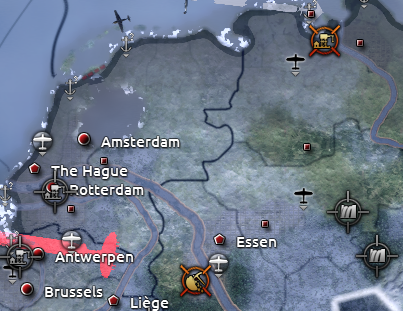












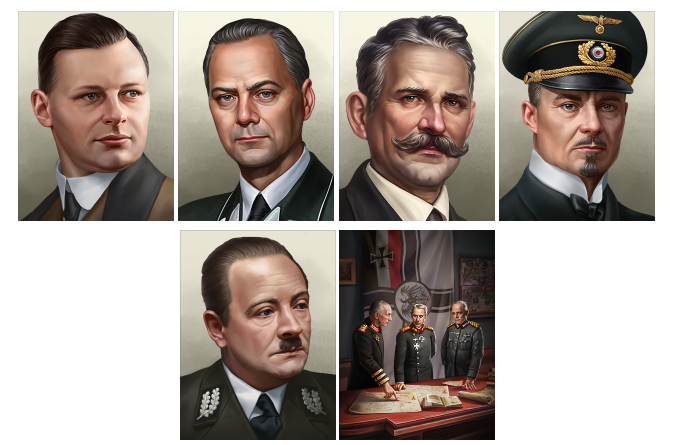



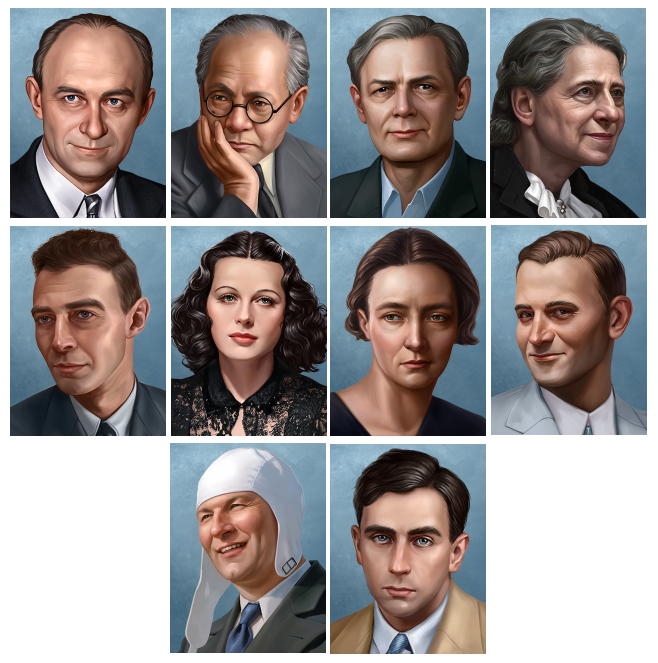


































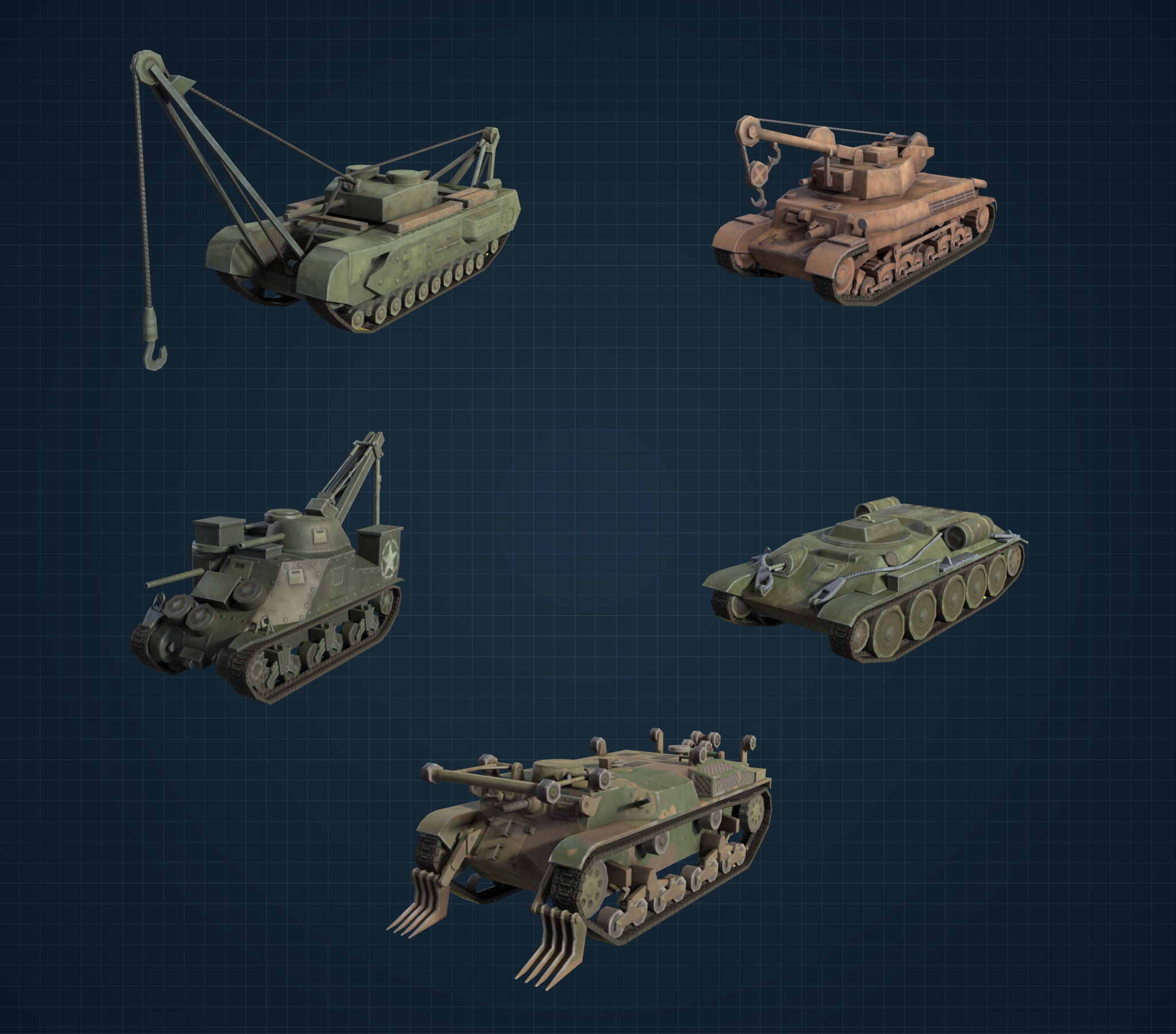



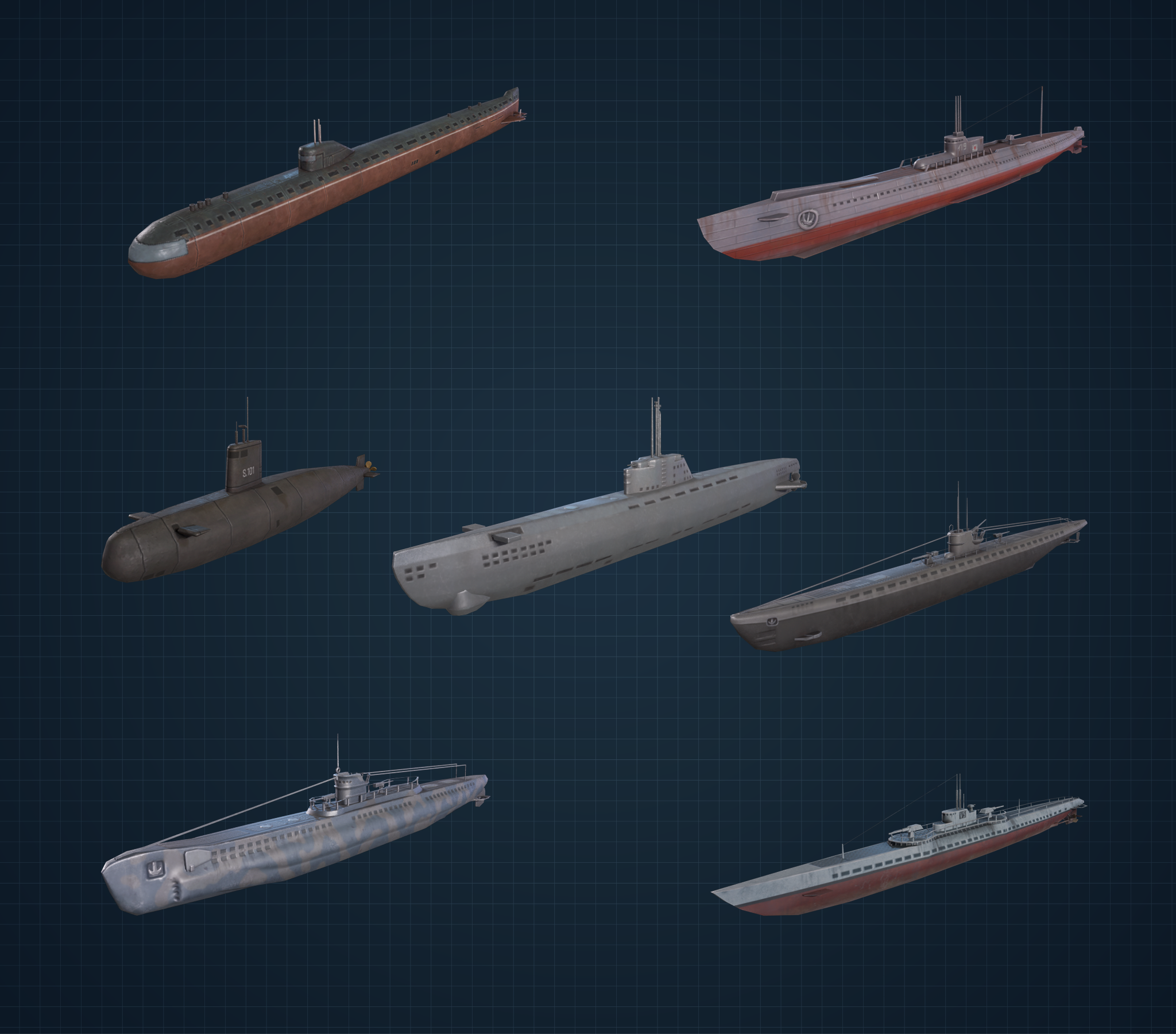




































 video here
video here The Old German Focus Tree has served us well over the years
The Old German Focus Tree has served us well over the years But it’s time to let a new German Tree sprout
But it’s time to let a new German Tree sprout Germany’s democrats and monarchists have received more to do and are now even accompanied by the communists
Germany’s democrats and monarchists have received more to do and are now even accompanied by the communists
 The Democratic and Monarchist paths share most focuses but cater to different playstyles while not excluding any of them
The Democratic and Monarchist paths share most focuses but cater to different playstyles while not excluding any of them After you Re-establish Free Elections you can become a technological powerhouse, secure better relations with your Western neighbours, but also become a beacon of Democracy
After you Re-establish Free Elections you can become a technological powerhouse, secure better relations with your Western neighbours, but also become a beacon of Democracy Cooperation and reconciliation will lead to technological innovations and more trade
Cooperation and reconciliation will lead to technological innovations and more trade The Shield of Democracy comes in two different flavours
The Shield of Democracy comes in two different flavours After you Revive the Kaiserreich you can start to realize the Imperial Forces’ true potential
After you Revive the Kaiserreich you can start to realize the Imperial Forces’ true potential With Germany’s old colonies lost, the question is how you will regain them
With Germany’s old colonies lost, the question is how you will regain them What alliances and deals will you strike to strengthen Germany?
What alliances and deals will you strike to strengthen Germany? Tie other nations closer to Germany by strengthening their industries and exploiting their resources
Tie other nations closer to Germany by strengthening their industries and exploiting their resources Who said playing nice can’t be fun? Protect Eastern Europe before the Soviets come knocking on your door
Who said playing nice can’t be fun? Protect Eastern Europe before the Soviets come knocking on your door Coerce your eastern neighbors into giving up lands so you can restore the borders set by the Treaty of Brest-Litovsk
Coerce your eastern neighbors into giving up lands so you can restore the borders set by the Treaty of Brest-Litovsk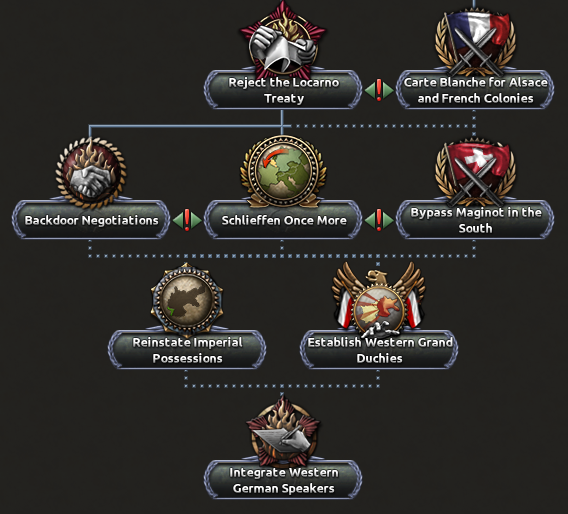
 Throw off the shackles of capitalism and free workers around the world as Communist Germany
Throw off the shackles of capitalism and free workers around the world as Communist Germany Spread the Proletarian Revolution to new states to gain momentum for your cause!
Spread the Proletarian Revolution to new states to gain momentum for your cause! The Second German Civil War
The Second German Civil War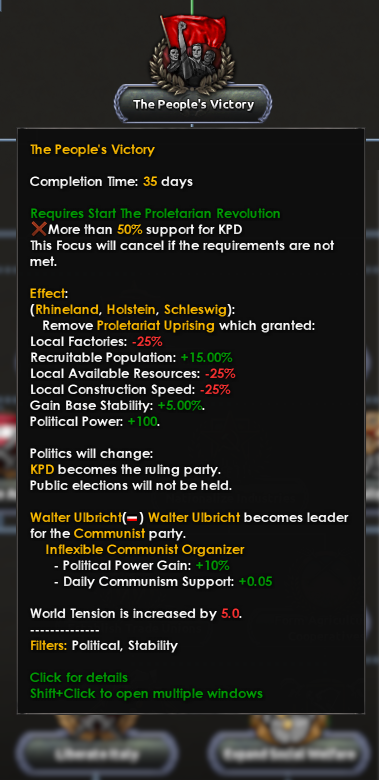
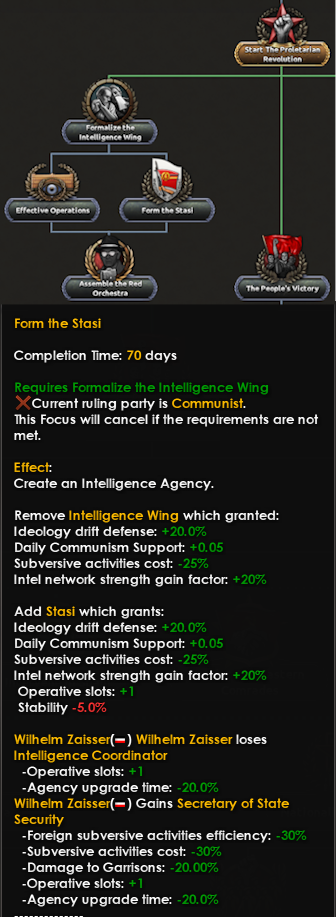
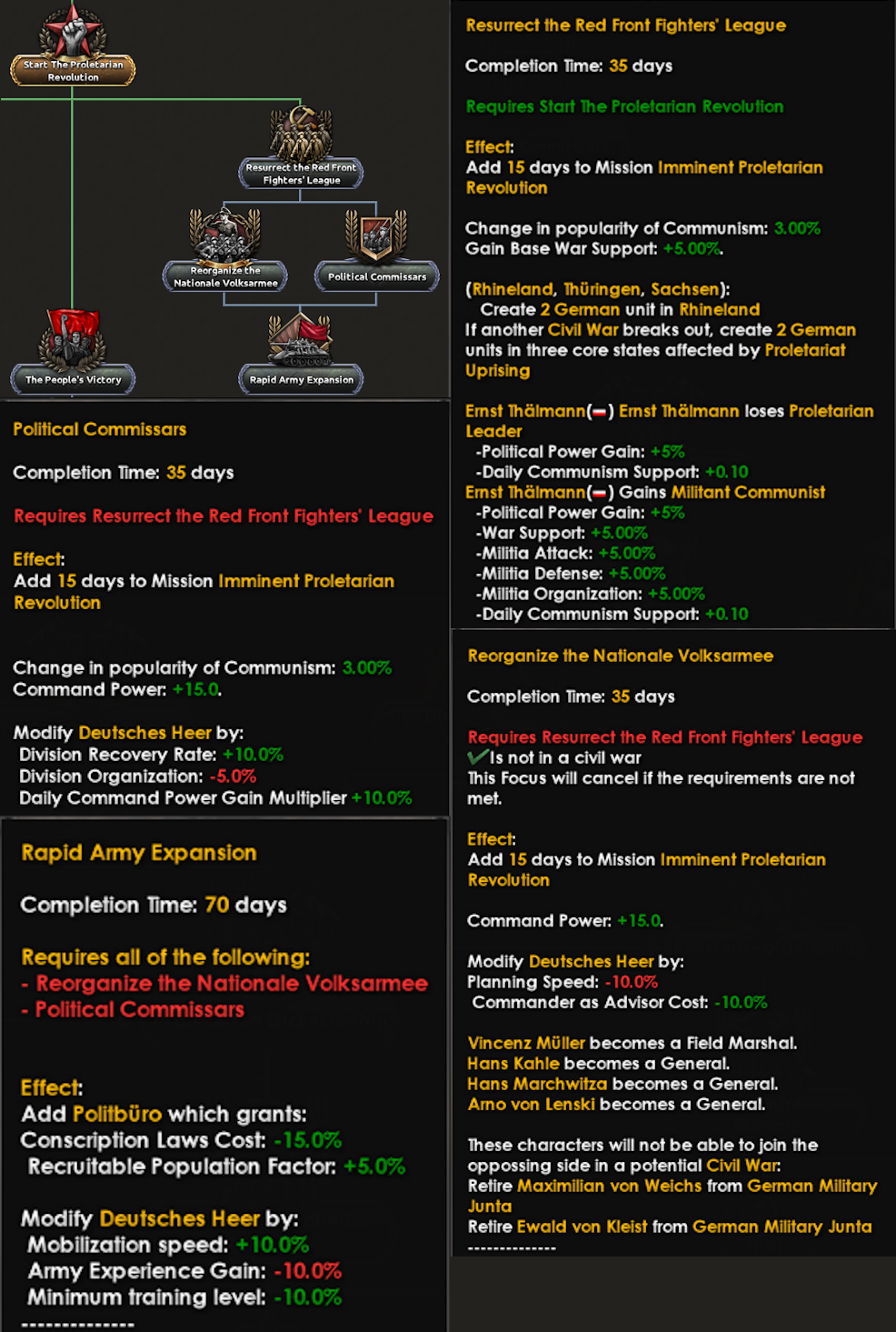 Get Communist militias and upgrade Ernst Thälmann’s advisor trait in the Nationale Volksarmee branch (where you might have to sack some generals but also get new ones)
Get Communist militias and upgrade Ernst Thälmann’s advisor trait in the Nationale Volksarmee branch (where you might have to sack some generals but also get new ones)

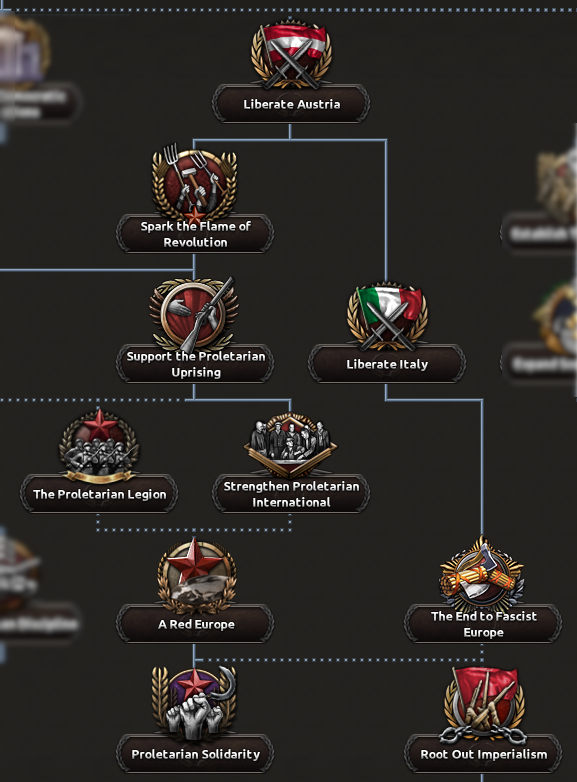
 Turn all of Europe Red to bolster your faction in ever-growing numbers and put an end to Fascism in Europe
Turn all of Europe Red to bolster your faction in ever-growing numbers and put an end to Fascism in Europe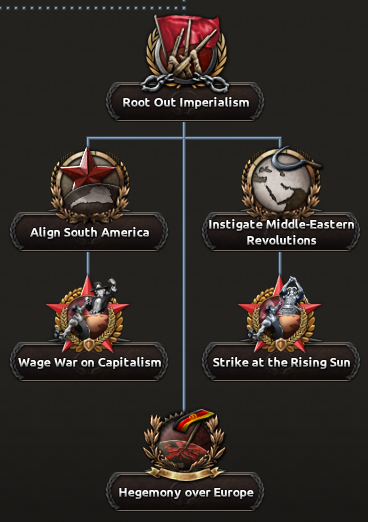
 Communist hegemony won’t be realized until we have Hegemony over Europe
Communist hegemony won’t be realized until we have Hegemony over Europe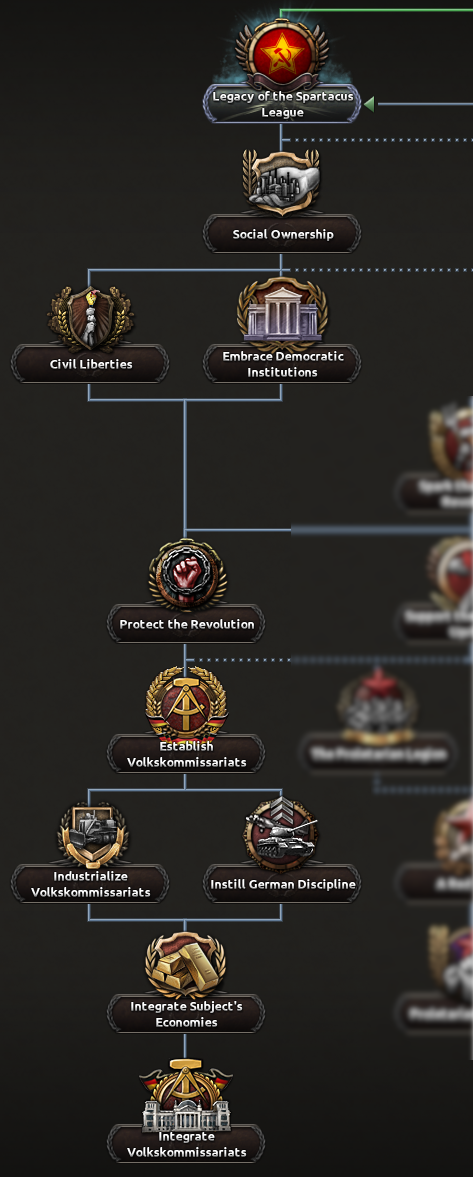

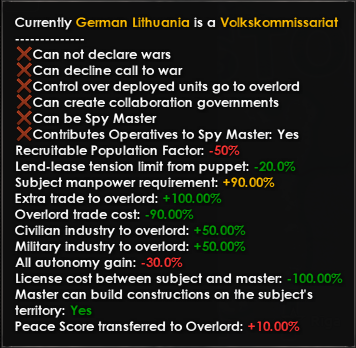
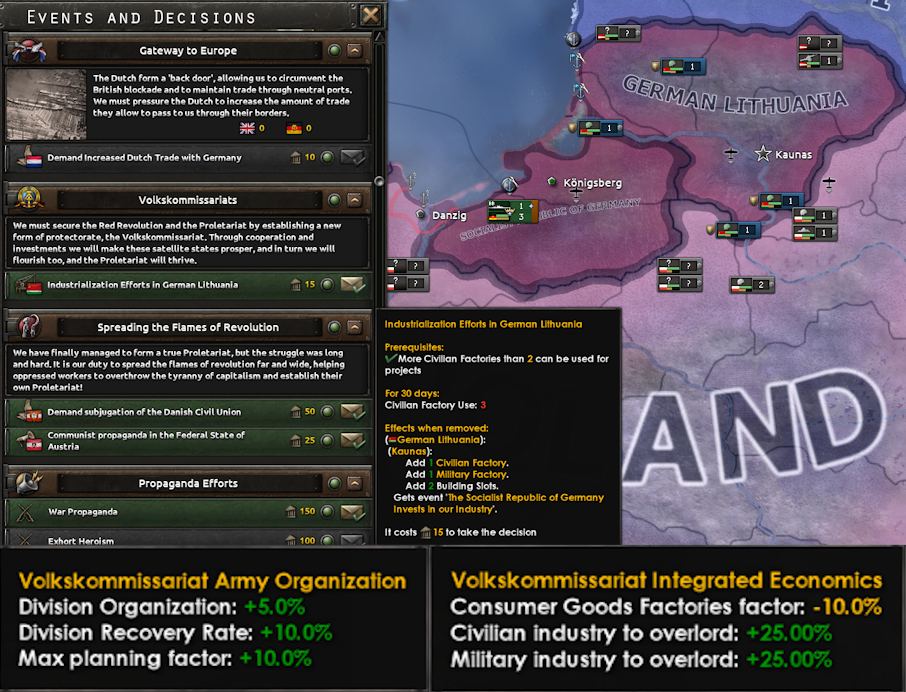 Boosting your Volkskommissariats will inevitably strengthen you too
Boosting your Volkskommissariats will inevitably strengthen you too
 The Spheres of Influence will divide Europe between you and the Soviets
The Spheres of Influence will divide Europe between you and the Soviets













